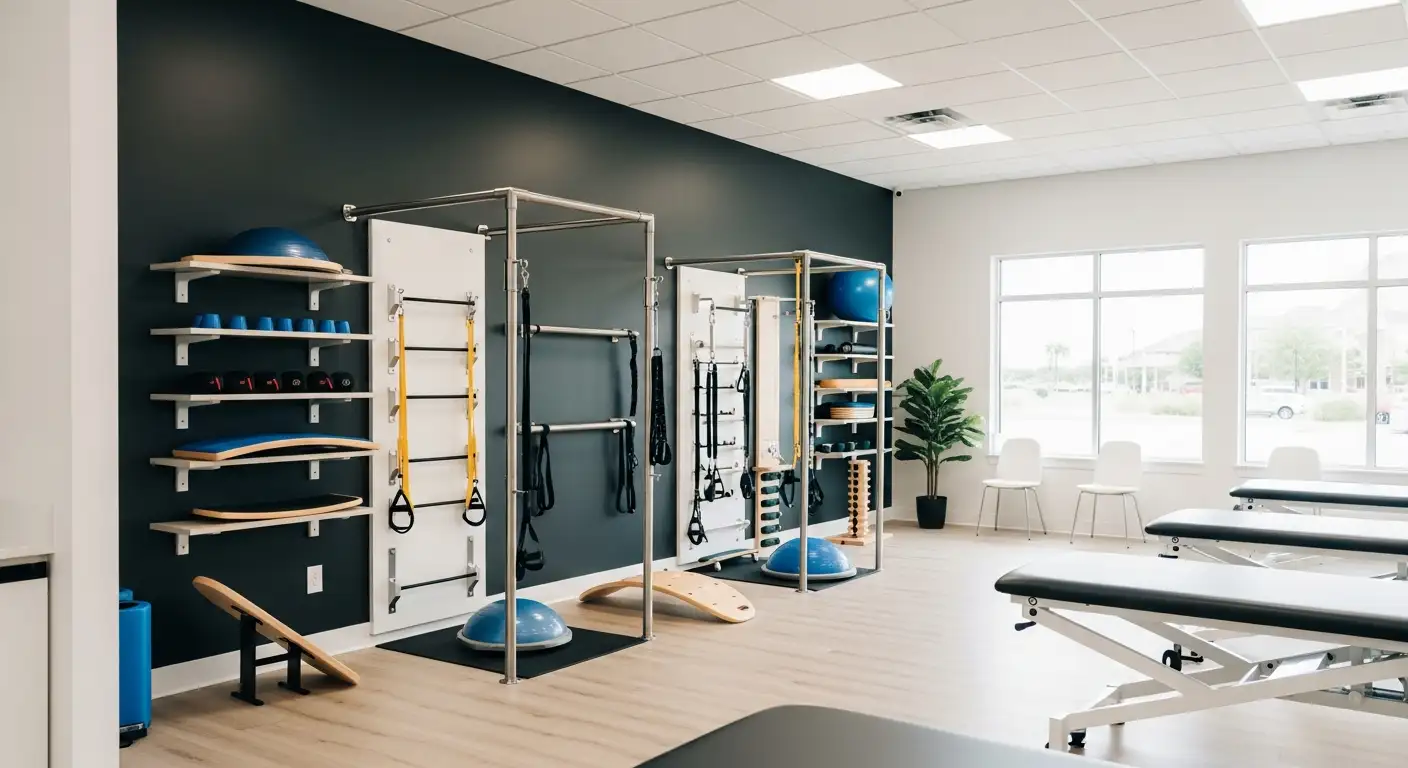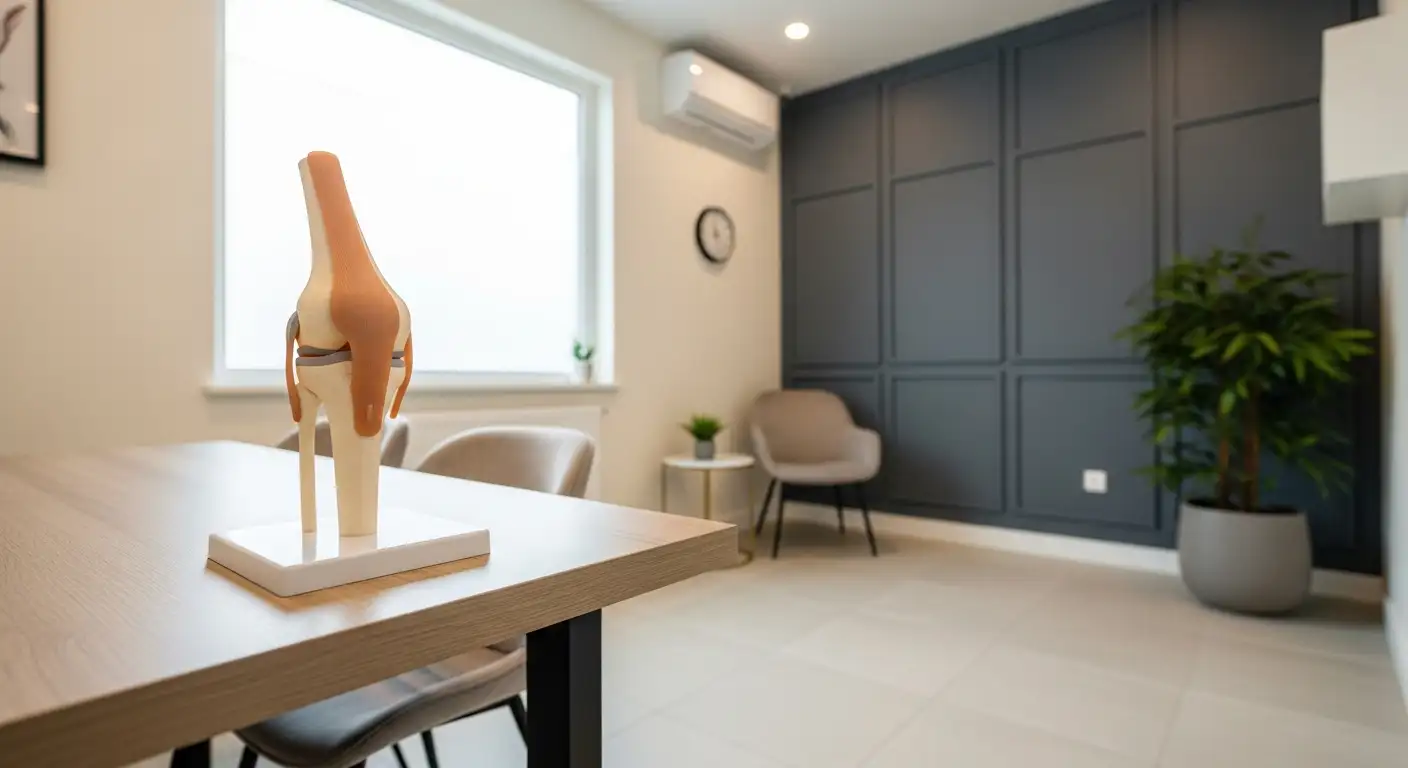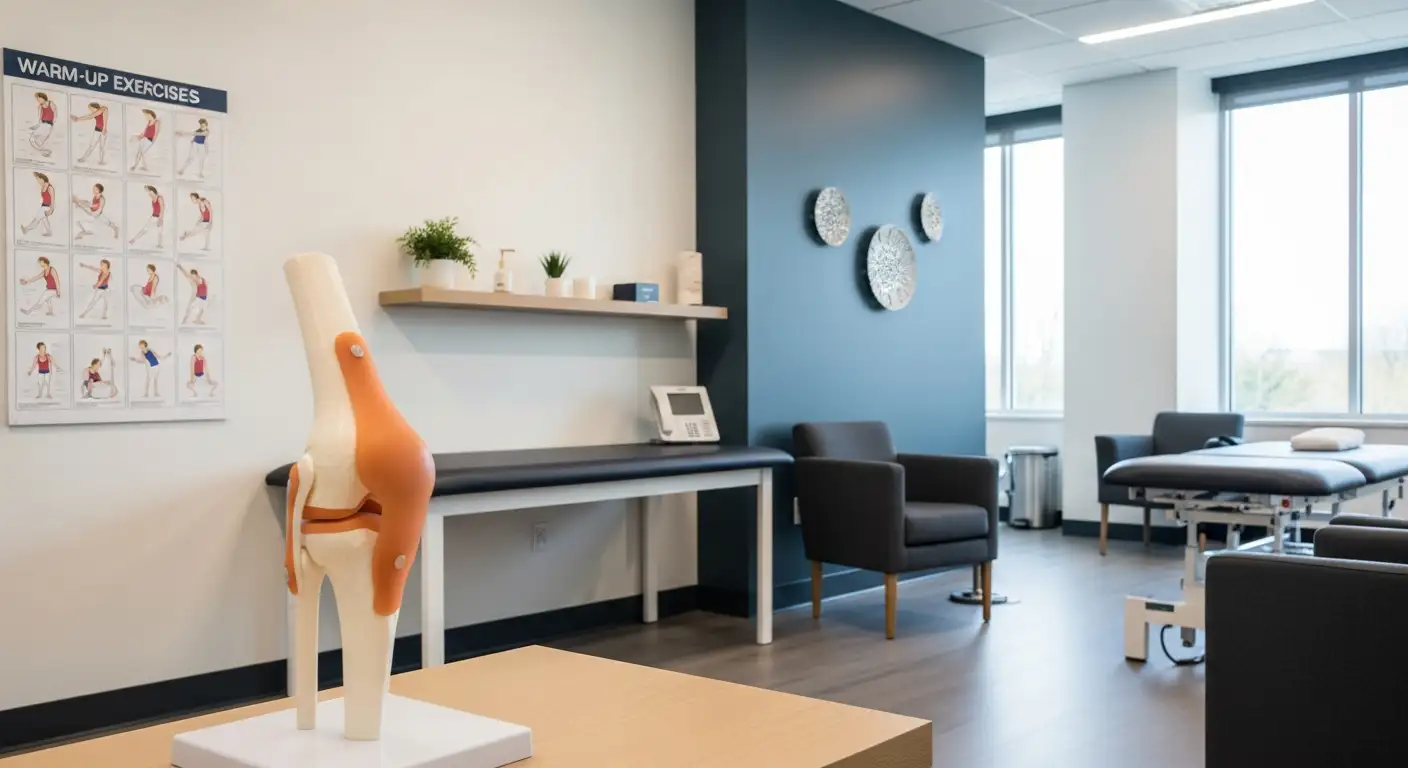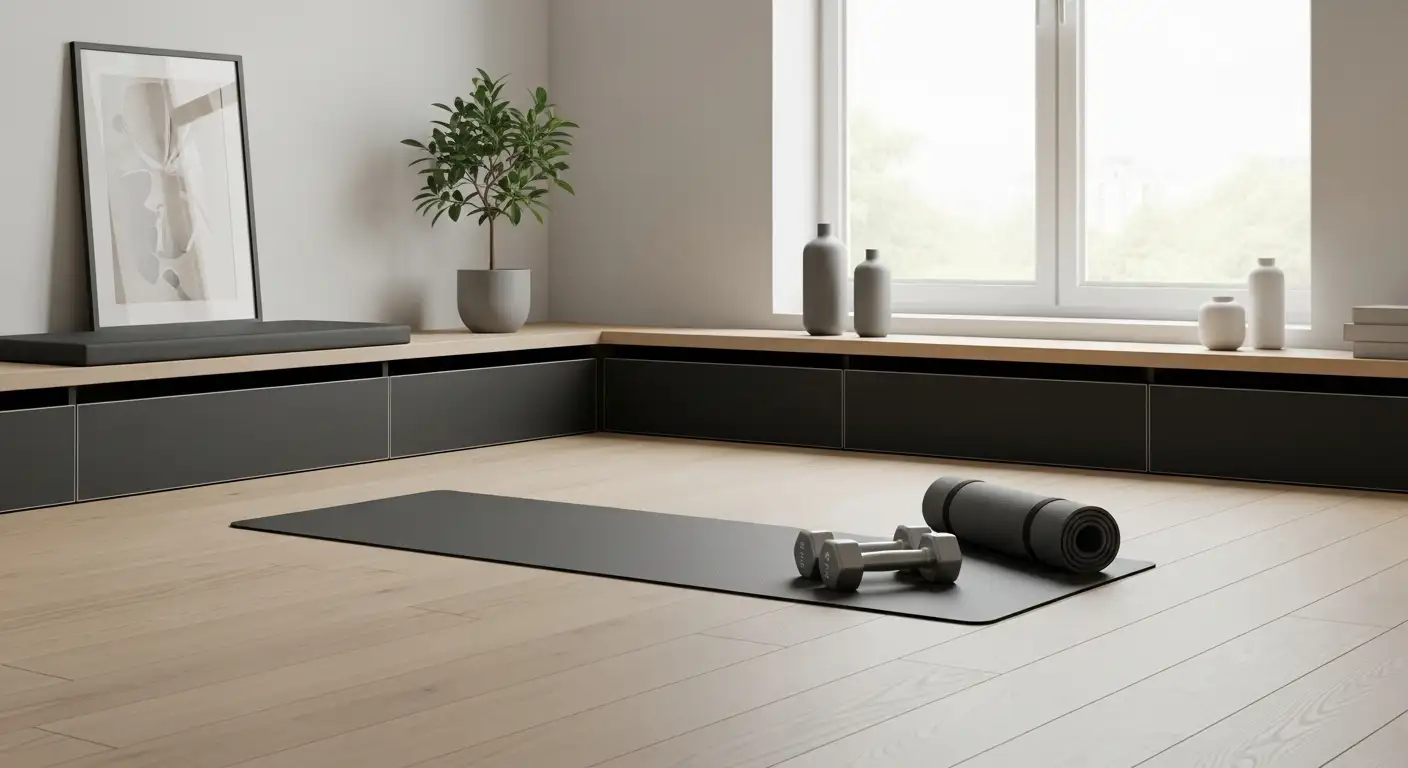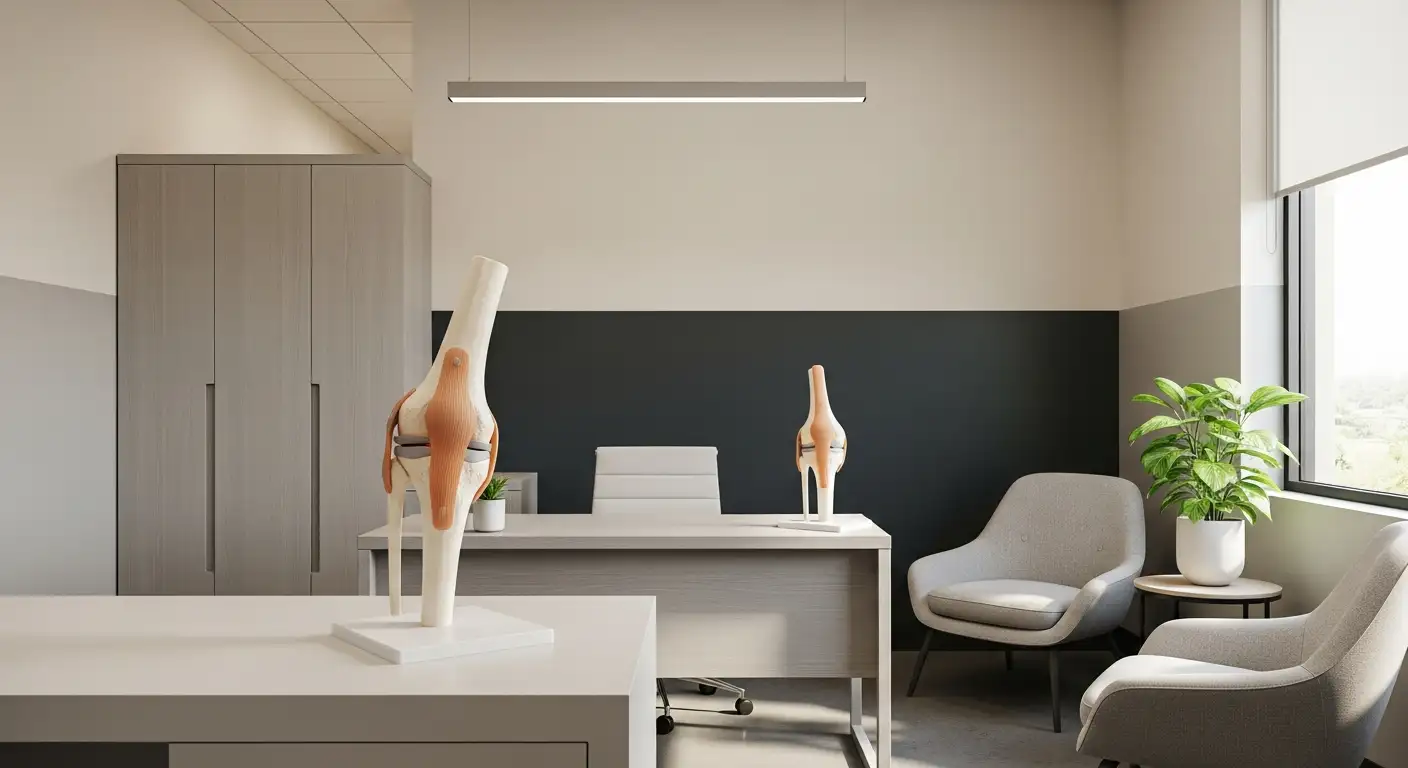Understanding Popliteus Tendon Injuries
Role of Popliteus Tendon in Knee Function
The popliteus tendon connects the popliteus muscle to the thigh bone (femur) at the upper inside rear of the knee, and it attaches to the lateral front of the lower leg at the tibia. This tendon is essential for overall knee stability and proper knee flexion. It plays vital roles in various knee motions, including initiating leg movement, unlocking the knee joint, ensuring proper foot placement during running, and moving the meniscus to prevent impingement within the knee joint [1].
The popliteus muscle serves as a major stabilizing muscle for the knee, having significant functions in both closed-chain and open-chain phases of the gait cycle. In the closed-chain phase, it externally rotates the femur on the tibia, while in the open-chain (swing) phase, it internally rotates the tibia on the femur [2].

Mechanisms of Popliteus Tendon Injuries
Injuries to the popliteus tendon usually occur as part of posterolateral corner injuries of the knee. These injuries can arise due to various factors, including a varus force (where the knee bends inward) or a direct blow to the knee. The popliteus muscle is sometimes referred to as the "fifth major ligament of the knee" because of its role in stabilizing the knee during movement. Its primary functions include the internal rotation of the lower leg while walking, stabilization of the knee's forward movement, and laterally stabilizing the meniscus during knee flexion.
Mechanism of InjuryDescriptionVarus ForceInward bending of the knee, which can strain or tear the tendon.Direct BlowTrauma to the knee area, potentially damaging the popliteus tendon or muscle.Posterolateral Corner InjuryComplex injuries involving multiple structures, including the popliteus tendon.
Diagnostic imaging, particularly magnetic resonance imaging (MRI), is recommended for evaluating dysfunction of the popliteus and determining the extent of an injury. Recognizing the role of the popliteus tendon and understanding the mechanisms of its injuries is crucial for effective treatment and rehabilitation. For further insights into related injuries, explore our articles on quad tendonitis and locking knees.
Diagnosing Popliteus Tendon Issues
Accurate diagnosis of popliteus tendon injuries is vital for effective treatment and recovery. The evaluation process typically includes a thorough physical examination and advanced imaging techniques such as MRI.
Evaluation Through Physical Examination
During the physical examination, healthcare professionals look for specific signs associated with popliteus tendon injuries. Key findings can include:
Additional diagnostic tests may also be employed. The Garrick Test assesses for pain during external rotation of the lower leg, while the Shoe Removal Maneuver tests for pain during internal rotation of the leg when removing a shoe on the opposite side of the affected knee.
Physical Examination FindingDescriptionJoint-Line TendernessPain at the posterolateral knee jointJoint EffusionNoticeable swelling in the kneeDiscomfortMild pain during knee motion
Utilizing MRI for Accurate Diagnosis
MRI is an invaluable tool for diagnosing popliteus tendon injuries, particularly given the rarity of such conditions and the potential for symptoms to overlap with other knee pathologies. It provides detailed images that can reveal:
According to PubMed Central, a comprehensive evaluation combining the patient's history, physical examination results, and MRI findings is essential for an accurate diagnosis. Additionally, complete tears of the popliteus muscle may be identified clinically, but determining the extent of injury to related structures often requires MRI for clarity [4].
With a strong foundation in physical examination and imaging techniques, healthcare professionals can accurately assess popliteus tendon injuries, leading to effective treatment strategies. For more in-depth insights on related knee conditions, consider exploring information on medial knee anatomy and posterior knee.
Treatment Options for Popliteus Tendon Injuries
Treating popliteus tendon injuries is essential for restoring knee function and alleviating pain. There are two primary approaches to treatment: conservative management and surgical intervention.
Conservative Management Approaches
Conservative management has shown comparable short- and long-term functional outcomes to surgical repair [5]. This approach often includes the following strategies:
A case study exemplifies the effectiveness of this approach. A 22-year-old professional rugby player with a complete popliteus tendon rupture underwent conservative management and returned to full contact activities within four weeks.
Management StrategyDescriptionRest and Activity ModificationReducing or modifying activities to prevent further injury.Physical TherapyRehabilitation focusing on strengthening and mobility.Pain ManagementUse of NSAIDs to manage pain and swelling.Weight BearingEarly weight bearing with functional exercises.
Surgical Intervention Considerations
In certain cases, surgical intervention may be necessary, especially for severe injuries or when conservative treatments fail. Surgical options typically include:
Clinical studies indicate that patients who undergo arthroscopic treatment of popliteus tendinitis experience significant postoperative improvements in pain relief and overall knee function. In one study, all 15 patients exhibited better clinical outcomes after surgery, highlighting the procedure's efficacy.
Surgical OptionDescriptionArthroscopic SurgeryMinimally invasive surgery to treat popliteus tendinitis.Tendon RepairRepairing a torn popliteus tendon through surgical methods.
Both treatment options are valuable in managing popliteus tendon injuries. The choice between conservative management and surgical intervention should be tailored to the individual's condition, preferences, and overall health status. Individuals experiencing symptoms or injuries related to the popliteus tendon should consult a healthcare professional for appropriate diagnosis and treatment options.
Rehabilitation for Popliteus Tendon Recovery
Importance of Specific Rehabilitation Protocols
Effective rehabilitation protocols are vital for recovering from popliteus tendon injuries. Specific rehabilitation approaches should focus on restoring function, strength, and stability to the knee joint. Research indicates that conservative management with early weight bearing and functional rehabilitation has shown comparable outcomes to surgical repair for isolated popliteus tendon ruptures.
A well-structured rehabilitation program typically includes:
PhaseFocusActivitiesAcuteRest, IceRest the knee, ice application for 15-20 minsEarly RehabilitationWeight Bearing, FlexibilityPartial weight-bearing exercises, gentle stretchingStrengtheningStrength & StabilityResistance exercises, focus on quadriceps and hamstringsFunctionalReturn to ActivitySport-specific drills, balance training
Gradual Return to Activity Guidelines
Returning to activities after rehabilitation must be done cautiously to avoid re-injury. It is crucial to follow a gradual return-to-activity protocol that aligns with the individual's recovery progress. Steps typically include:
Recommendations for returning to higher-impact sports and activities include:
Activity LevelRecommendationsLow Impact (Walking, Cycling)Begin when cleared by a healthcare professionalModerate Impact (Jogging)Introduce after 4-6 weeks, ensuring no painHigh Impact (Running, Sports)Return progressively after 8-12 weeks, with assessment
Rehabilitation and gradual return to normal activities play critical roles in the recovery from popliteus tendon issues. Adhering to specific protocols and guidelines can significantly enhance recovery and reduce the risk of future complications. For further insights into knee-related conditions, consider exploring articles on posterior knee or quad tendonitis.
Preventing Popliteus Tendon Issues
Preventing injuries to the popliteus tendon is essential for maintaining knee health and ensuring proper function. Effective strategies include incorporating strengthening and stretching exercises into daily routines as well as being aware of common risk factors that could contribute to injuries.
Strengthening and Stretching Exercises
A well-rounded approach to strengthening and stretching can help to protect the popliteus tendon. These exercises focus on improving flexibility, muscular stability, and overall knee function.
Recommended Exercises
Type of ExerciseDescriptionStrengthening ExercisesImplement exercises such as lunges, squats, and calf raises to build strength in the muscles surrounding the knee.Stretching ExercisesFocus on stretches for the hamstrings, quadriceps, and calves to enhance flexibility and reduce tension in the knee area.
Incorporating these exercises regularly can improve the overall function of the knee joint. It is important to pay attention to any discomfort while performing these exercises, as this may indicate an underlying issue.
For more insight into muscle and tendon health, consider visiting our page on quad tendonitis.
Avoiding Common Risk Factors
Understanding and addressing risk factors can significantly reduce the likelihood of developing popliteus tendon injuries. Key factors to consider include:
Taking proactive measures, including strengthening exercises and being mindful of risk factors, can help maintain the integrity of the popliteus tendon. Staying informed about the knee joint's anatomy, including aspects such as medial knee anatomy and posterior knee, can further guide preventive strategies.
Case Studies and Success Stories
Conservative Treatment Success Stories
Conservative management has proven effective for many patients dealing with popliteus tendon injuries. One notable case involved a 22-year-old professional rugby player who suffered a complete rupture of the popliteus tendon at its musculo-tendinous junction. The athlete underwent a conservative treatment approach, which included tailored rehabilitation protocols. Remarkably, he returned to full-contact activities within just 4 weeks and rejoined regular season matches shortly thereafter. This case illustrates the potential for effective recovery through non-surgical means [5].
Furthermore, research indicates that conservative treatment, which includes early weight-bearing and functional rehabilitation, provides similar functional outcomes to surgical interventions for isolated popliteus tendon ruptures. This underscores the importance of adhering to specific rehabilitation protocols, which are crucial for successful recovery.
Case StudyInjury TypeTreatment MethodRecovery TimeRugby PlayerComplete ruptureConservative management4 weeks
Surgical Intervention Outcomes
In cases where conservative management is insufficient, surgical options have also shown promising results. For instance, arthroscopic-assisted treatment performed through an extreme lateral approach has been effective for managing severe and persistent popliteus tendinitis. This surgical intervention not only alleviates symptoms but also contributes to significant improvements in various knee joint scores, including Lysholm, Tegner, and IKDC measures, as well as Visual Analog Scale (VAS) scores. These results reflect positive clinical outcomes for patients, highlighting the effectiveness of surgical strategies for treating challenging cases [6].
Case OutcomeInjury TypeTreatment MethodImprovement MeasuresVarious PatientsPopliteus tendinitisSurgical interventionLysholm, Tegner, IKDC, VAS
Understanding the successes from both conservative management and surgical interventions offers valuable insights into the treatment of popliteus tendon injuries. It emphasizes the necessity of individualized treatment strategies and the importance of seeking appropriate medical guidance for knee pain issues. For additional information on related conditions, refer to our discussions on quad tendonitis, medial knee anatomy, and why does my knee click.
References
[2]:
[3]:
[4]:
[5]:
[6]:
